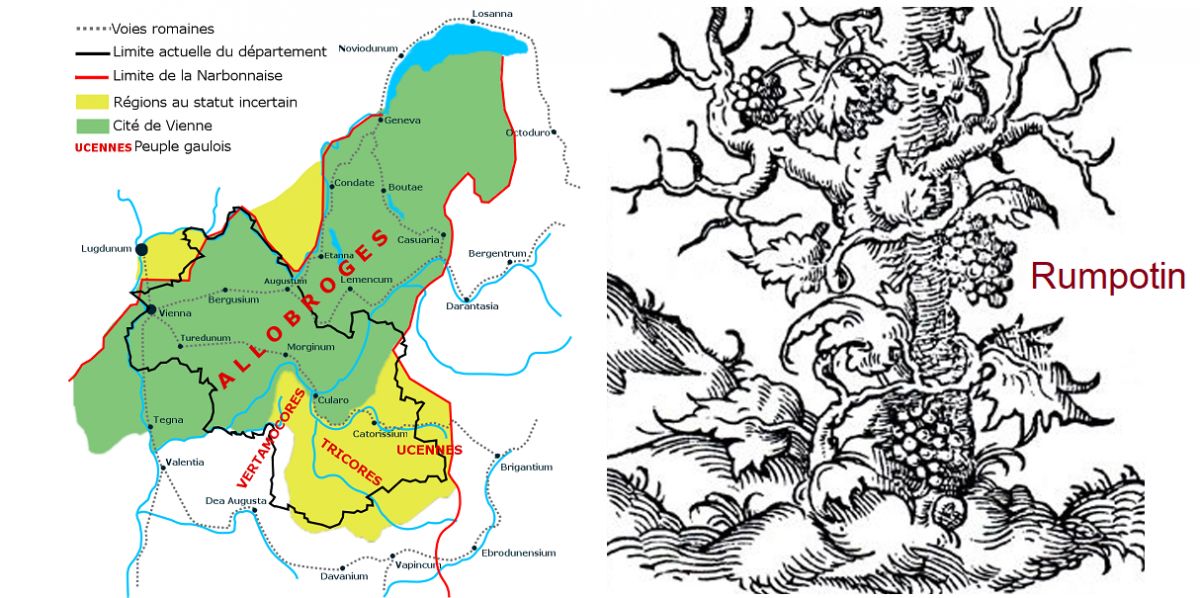An ancient grape variety mentioned by the Roman author Pliny the Elder (23-79) in his scientific work "Naturalis Historia", and also by his Roman contemporary Columella (1st half of 1st century). The name probably derives from the Celtic tribe of the Allobroges, whose territory stretched between the Rhône and Isère rivers in Savoy and as far as Lake Geneva, and who were subjugated by Julius Caesar (100-44 BC). During the Roman colonisation, vines were planted on the right bank of the Rhone (in the present-day areas of Saint-Joseph, Côte Rôtie) and on the left bank (Hermitage). Pliny describes the red wine, also called Vinum picatum at the time, with a resinous taste and attributed this to the pine forests located around the vineyards. Columella put forward the more probable thesis that this was caused by the resinating of the wines or the amphorae sealed with resin, which was common at the time.
Both authors describe a very old vine training of vines, which they describe as typical of Celtic viticulture. For this purpose, not too tall poplar trees known as "rumpotin" were prepared accordingly by leaving several side shoots on both sides of the usually only three transverse branches. Almost all other branches were cut off to prevent too much shade for the grapes. The vines were planted near the trees and their shoots were attached to the very thick trunk and branches in the form of a trellis. These then spread out in a meandering pattern. This vine training was in use for a very long time, in some countries even until the late Middle Ages.

Because of the suitability of this grape variety for cooler climates and the described resistance to winter frost, it has been speculated that Allobrogica or a direct descendant of it could belong to the group of Pinot varieties. However, other vines are also mentioned, for example the French ampelographer Joseph Roy-Chevrier in his work Ampélographie Rétrospective, the variety Mondeuse Noire, as well as Syrah by others. Incidentally, both probably originate from the Allobrog region. However, there is no historical or botanical or genetic evidence for all these rather vague assumptions. Since there is (can be) no genetic material, it cannot be verified. The Swiss biologist José Vouillamoz has a different opinion. He thinks that when the Romans called it "Vitis Allobrogica", they did not mean a grape variety, but the production area shown on the map. At that time it was widely practised (and this was true until the 19th century) to grow several varieties in a mixed set in the vineyard.
Source: WIKIPEDIA Allobrogica
Map: by Pedro38 - own work, CC BY-SA 3.0, link
Rumpotin: by JPS68 via photoshop - personal scan, Domaine public, Link
Voices of our members

The Wine lexicon helps me to keep up to date and refresh my knowledge. Thank you for this Lexicon that will never end in terms of topicality! That's what makes it so exciting to come back often.
Thorsten Rahn
Restaurantleiter, Sommelier, Weindozent und Autor; Dresden